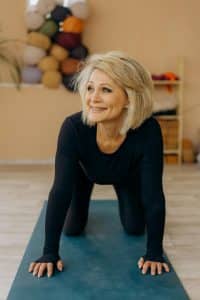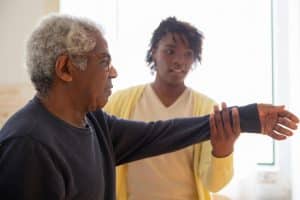Home Physio for Elderly: A Guide to Staying Active at Home

As we age, our bodies naturally slow down. We may notice stiffness in our joints, weaker muscles, or a loss of balance. This is all part of the ageing process, but the good news is that staying active can help us feel more mobile and independent. Home physiotherapy is a great way to keep moving, especially for those who live in rural areas like Norfolk or Suffolk where access to healthcare may be limited.
In this guide, I’ll walk you through simple steps to get started with home physiotherapy. These are gentle exercises you can do at home to improve your strength, balance, and flexibility—no fancy equipment needed. But remember, this is just a general guide. Everyone’s needs are different, so it’s always a good idea to have a personalised assessment from a physiotherapist.
Understanding the Needs of the Elderly
As we grow older, certain physical challenges are more likely to crop up, such as joint pain, stiffness, and reduced strength. Arthritis, for example, is very common and can make everyday tasks feel like a burden. Similarly, osteoporosis can cause bones to become brittle, making falls much more dangerous. That’s why home physiotherapy is so crucial. By staying active, we can help manage these conditions, improve our mobility, and reduce the risk of injury.
The Importance of Setting Realistic Goals
When starting any new activity, it’s important to be realistic. Home physiotherapy isn’t about running marathons—it’s about making small, steady improvements. The goals might be as simple as getting up from a chair without using your hands or improving your balance to reduce the risk of falls.
I once worked with a lovely elderly gentleman from Norfolk who had trouble walking more than a few metres without pain. By introducing simple exercises into his daily routine, he was able to walk around his garden comfortably within a few months. It’s these small victories that make all the difference in maintaining independence.
Setting Up a Safe Space for Physiotherapy
Before starting any exercises at home, it’s essential to create a safe environment. You don’t need a dedicated room or expensive equipment—just a bit of space and some common-sense adjustments.
- Remove Tripping Hazards: Clear away loose rugs, shoes, or anything you could trip over.
- Use Sturdy Furniture: Chairs or counters can provide support during exercises.
- Ensure Good Lighting: Especially in rural homes where natural light might be limited, proper lighting helps prevent falls.
Affordable Equipment for Home Physiotherapy
Many home physiotherapy exercises don’t require special equipment. A chair, a rolled-up towel, or even a water bottle can be used to support various movements. If you’re looking to invest in some basic tools, resistance bands, light hand weights, and a yoga mat can be very helpful. These items are affordable and can be found easily, even in rural areas like Suffolk.
Simple Exercises You Can Do at Home
Here are a few easy exercises that you can incorporate into your daily routine. Remember, these are gentle movements designed to improve strength, balance, and flexibility.
Strengthening Exercises
- Sit-to-Stand: Simply sit in a sturdy chair and stand up without using your hands. This helps strengthen the muscles in your legs and core.
- Wall Push-Ups: Stand about an arm’s length from a wall. Place your hands on the wall at shoulder height and push in and out, keeping your body straight.
Balance and Coordination Exercises
- Heel-to-Toe Walking: Walk in a straight line, placing one foot directly in front of the other, as if walking on a tightrope. Hold onto a chair if needed.
- Standing on One Leg: Hold onto a chair and stand on one leg for 10-15 seconds. Switch legs. This exercise can be done several times a day to improve balance.
Flexibility and Stretching
- Seated Hamstring Stretch: Sit on a chair and extend one leg straight out in front of you. Reach towards your toes and hold for 10 seconds, then switch legs.
- Shoulder Rolls: Sit or stand comfortably. Roll your shoulders in circular motions to loosen up tight muscles.
Breathing and Relaxation
Incorporating deep breathing exercises into your routine can help manage stress and improve lung function. Simply take a deep breath in through your nose, hold for a few seconds, and then slowly exhale through your mouth.
Progressing Over Time
It’s important to start slow and gradually increase the intensity of your exercises. This might mean adding an extra repetition or holding a stretch for a few more seconds. Don’t rush—listen to your body and progress at a pace that feels comfortable.
You can keep track of your progress by noting how much easier it becomes to move around or complete everyday tasks. Small changes, like feeling less stiffness in the morning or walking a bit farther, are signs that your body is responding well to the exercises.
When to Seek Professional Support
While these home tips are beneficial, there are times when professional support is necessary. If you experience persistent pain, a worsening condition, or are recovering from surgery, a tailored approach might be required. Whether it’s a private home physiotherapy session in Norfolk or Suffolk, or a visit to a care home, professional guidance can ensure you’re doing the right exercises safely.
Online consultations are also available now, providing more access to in-home physiotherapy advice, especially for those living in remote rural areas.
Final Thoughts
Staying active as we age is one of the best ways to maintain independence and improve overall well-being. Home physiotherapy provides a convenient and effective way to keep moving, even when healthcare options are limited.
If you’re interested in more personalised support or need guidance on how to get started with private home physiotherapy, feel free to contact us. We’re here to help you stay active, mobile, and independent.
Disclaimer: This guide is intended to provide general advice on home physiotherapy for elderly individuals. Everyone’s needs are unique, so it’s essential to seek personalised assessment and treatment from a qualified physiotherapist.

